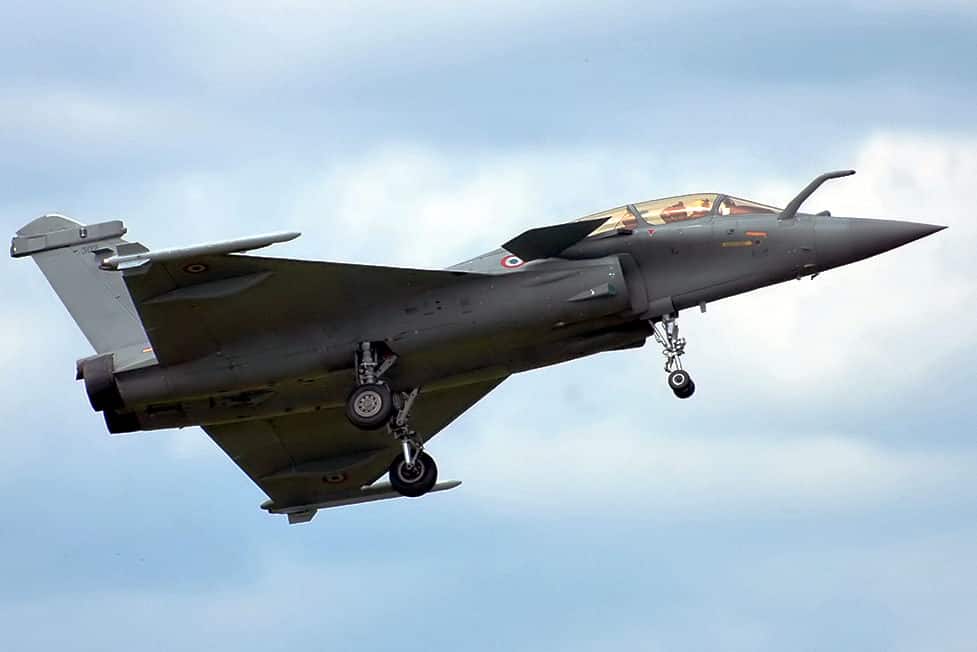Rafale Deal: Introduction
- The origins of the Rafale deal go back nearly a decade ago, to 2007, when the Indian Air Force (IAF) kicked off a process to replace many of its MiG aircraft squadrons.
- The airworthiness of IAF’s fighter fleet has been an area of concern, with Sukhoi Su30 fighters struggling to maintain an airworthiness of 50 per cent.
- Some of the MiGs were ageing quicker than expected and raised concerns over safety record of them.
- The initial tender process saw a number of companies participate, the most important of which were Dassault, Lockheed, Mikoyan, Saab and the consortium behind the Eurofighter Typhoon.
- Dassault’s Rafale was almost the perfect medium multi-role combat aircraft, not only because of its nuclear-strike variant, but because it was generally seen as low-maintenance and possessed many similarities with the Mirage aircraft that the IAF already operated.
- The French had made an opening offer of € 12 billion in May last year when the negotiations began.
- The French offer came down to € 8.6 billion on the midnight of 25-26 January, when French President François Hollande was in India as a chief guest for the Republic Day celebrations.
- It was in May this year that the two sides finally agreed at a price of € 7.878 bn. This includes the cost of 36 plain-vanilla fighters, the full weapons package, performance-based logistics, India-specific enhancements and associated supplies.
- According to sources, negotiations over the past 17 months have yielded more advantages to the Indian side over the MMRCA (Medium Multi-Role Combat Aircraft) deal.
Deal with India’s perspective.
- India will get a fighter with 14 India-specific enhancements and a modern air-to-air missile that restores its edge in aerial combat over Pakistan.
- Meteor missile is a Beyond Visual Range missile and provides a no-escape zone three times greater than that of a conventionally powered missile in a head-on engagement.
- Meteor is five times as lethal as its conventional equivalent such as the American AMRAAM missile, and can hit farther than the missile that Pakistan air force has in its arsenal.
- The Rafales will also be fitted with MICA missiles, an Air to Land precision missile of more than 300 km range.
- It will be a seventh fighter type, which would require expensive, tailor-made base infrastructure, repair depots and spare parts chains which is hardly welcomed by IAF logisticians.
- Sukhoi-30MKIs would eliminate this need, besides being cheaper.
- Alternatively, fast-tracking the Fifth Generation Fighter Aircraft, which Russia and India intend to co-develop, would eliminate the need for Rafales.
- India needs some 200 to 300 fighters to replace the MiG-21 and MiG-27 fleet that is being phased out of service. Just 36 Rafales provides little cover, so the IAF hopes to buy not just 18 more under the options clause, but perhaps another tranche later.
What all is in the Rafale deal?
- The Rafale deal includes the aircraft in fly-away condition, weapons, simulators, spares, maintenance, and Performance Based Logistics support for five years.
- Warranty is extendable by two years by factoring inflation and further by another five years upon negotiation. For the entire deal inflation has been capped at a maximum of 3.5 % or current rate whichever is lowest.
- India is expected to receive all 36 Rafale fighters in fly-away condition within 36 months after signing the final contract.
- The French fighter will be fitted with the 150-km range Meteor missile in the weapons package that Indian Air Force will get as part of the € 7.878-billion (around ₹ 59,000 crore) deal for 36 Rafale fighters.
- The French will also guarantee performance-based logistics support which means that 75 per cent of the fleet will be airworthy at any given time.
- Along with the 36 French fighters, IAF will also get a better weapons package, and free training for nine personnel, including three pilots, estimated to be worth € 100 million.
- The IAF will get an additional guarantee for an additional 60 hours for the trainer version of Rafale fighters, and a concession to keep the weapons storage in France for an additional six months without any charge.
- The French have also agreed to supply spares for a period of seven years at initial cost, instead of five years, with an option that a new deal will be negotiated for the next five years.
Conclusion
- Today India need a minimum of 45 squadrons as requested by air force chiefs and 42 as sanctioned by the government to properly protect its border against Pakistan and China.
- It currently has 30-32 squadrons of fighters, with each squadron consisting of anywhere between 18-21 aircraft.
- In another four years, we will lose another 12-14 squadrons as we start decommissioning different variants of the MiG fighters.
- The 36-fighter Rafale purchase counts to around two squadrons and is a tiny attempt at plugging our future requirements.
- The Rafales will be the seventh different type of fighter jet in the Indian air force — each one bringing its own set of spare parts, logistical support and training needs.
- These fighters take the total number of squadrons in the Indian air force from 33 to 35 which is still short of both 42 and 45.
- India will now pay ₹ 1000 crore for every single Rafale plane which is equal to 2.5 times the price of Sukhoi-30 MKI fighters — a heavy fighter as capable as the Rafale.
- It is unclear why the government decided to buy just 36 fighters, which creates logistical and operational complications and pushes up the overall cost for reasons of economies of scale.
- In the years to come, the indigenously built Light Combat Aircraft Tejas and the Fifth Generation Fighter Aircraft from Russia will join the force, adding to the diversity. While the Rafale deal is a welcome step, it is high time India made procurement based on a long-term integrated plan.











